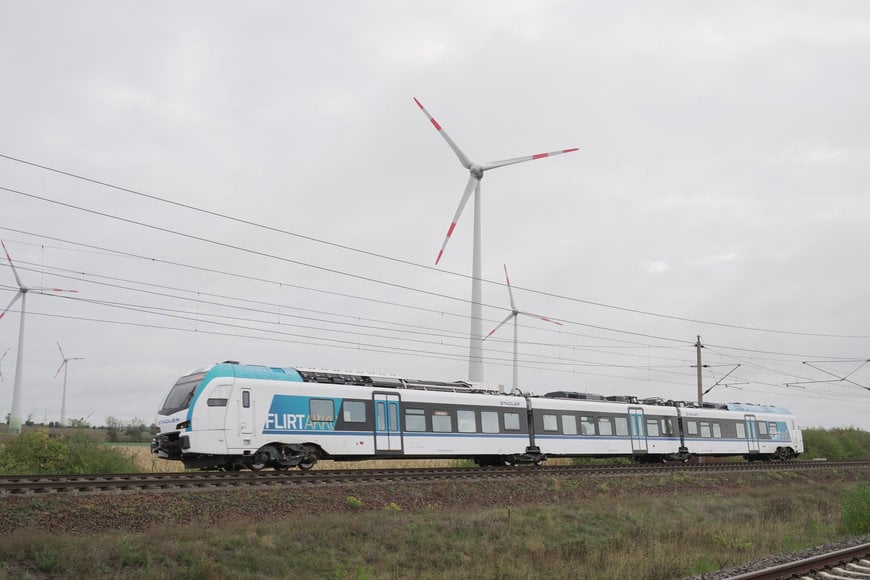railway-international.com
08
'21
Written on Modified on
185-Kilometre Range: Stadler Successfully Concludes "Battery Technology" Research Project with theFLIRTAkku
Stadler has successfully completed the research project launched in 2018 to develop and test battery technologies in the railway vehicle sector after a three-year research phase. The project was funded by the German Federal Ministry for Economic Affairs and Energy and developed jointly with TU Berlin and EWE AG. The vehicle, designed as a test carrier, far exceeded initial expectations during the three-year trial phase with a proven range in battery-only mode of 185 kilometres.

54 percent of the European rail network has an overhead line. In Germany, the figure is currently around 60 percent, with 70 percent of lines to be electrified by 2025. For the remaining lines, the use of CO2 emission-free railway vehicles is a fundamental building block for achieving the EU climate targets. Stadler had specific approaches to making rail transport environmentally friendly and energy-efficient on all routes at an early stage. As part of the three-year project funded by the German Federal Ministry for Economic Affairs and Energy entitled "FLIRT (battery) joint project –grid integration and grid-serving charging of a battery-electric railway vehicle for bridging extensive non-electrified or partially electrified route sections in regional transport", the company developed the FLIRT Akku, a three-part test carrier based on the FLIRT vehicle type for testing battery technology.
"During our joint project work, we were able to gain valuable insights into the further development of battery technology", explains Evelyn Thiel, technical manager of the research project at Stadler. Since its unveiling in the autumn of 2018, the vehicle,which is fully approved for passenger operation, has covered 15,000 kilometres in battery-only mode. The project team placed particular emphasis on testing in passenger service possible scenarios such as making up for unplanned delays on the line and operation in extreme weather conditions to test the response of the batteries.
"In the summer of 2019, we tested the FLIRT battery during a heat wave at 40 degrees outside temperature and full use of the air conditioning system, as well as in the winter of 2021 during double-digit sub-zero temperatures. Use in battery-only mode was possible without restriction at all times, without us hitting the lower limit of capacity", says Evelyn Thiel.
Page 2 2185 kilometres of proven rangeThe technical feasibility of battery technology in rail transport and the limits of the installed battery capacity were explored on test runs set up specifically for this purpose together with the manufacturer of the batteries for the test vehicle, the German company Initilion GmbH, in order to gain valuable experience for the design of future vehicles. The operational constraints that transport companies must take into account when making the necessary and desired switch from diesel to battery-electric traction were also investigated. In the process, the calculated maximum range of the vehicle on routes without overhead lines could be corrected upward in the verification with 185 km.
"At Stadler, we are continuously working on making rail transport even better and free of emissions with good ideas and their rapid and practical technological implementation, in order to convince even more people to switch to rail. We are proud to have developed an environmentally friendly, flexible vehicle to market readiness with the FLIRT Akku and not only to have proven our assumptions within the framework of the research project with the support of our project partners and the project sponsor, but to have exceeded them. Together with the FLIRT H2, Stadler offers CO2-emission-free solutions for every route", says Steffen Obst, Head of Sales for Regional TrainsStadler Germany.
www.stadlerrail.com

